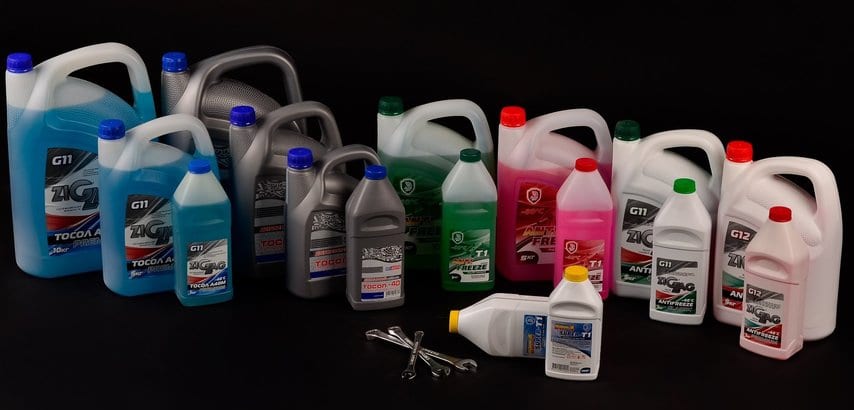
Coolant replacement. When to change
Content
When and why do I need to change the coolant? What are the consequences of an untimely replacement, improperly selected or poor-quality antifreeze? How to replace the coolant yourself? You will find the answers to these questions below.
Why do I need antifreeze in a car
From the name it is clear that the main task of the liquid is to cool. What exactly coolant has to be cooled and why?
During the operation of the engine, a huge amount of heat is released, especially during the compression stroke, when the temperature in the cylinders reaches 2500 °, without cooling, the engine would heat up and fail in a few minutes. Also, antifreeze maintains the operating temperature of the engine, at which the highest efficiency and economy of the internal combustion engine is achieved. The “cooler” has a second advantage - providing the interior of the car with heat when the stove is turned on, due to the circulation of the cooling system through the heating. So, antifreeze:
- cools;
- maintains optimum motor temperature;
- protects against overheating.
The principle of operation of the coolant is simple: the engine provides channels called the cooling jacket. Upon reaching the operating temperature, the thermostat opens, and the water pump pressurizes the liquid into the engine, after which it heats up and passes through the radiator, and again enters the internal combustion engine already cooled. In addition to the main function, antifreeze provides anti-corrosion properties, eliminates scale formation, has lubricating properties that are necessary for high-quality and long-term operation of the thermostat and pump.
Types and differences of coolants
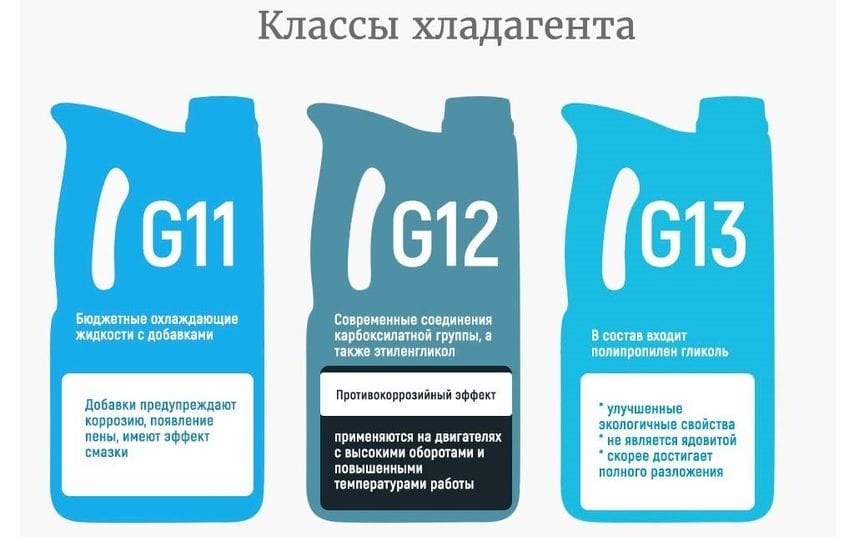
Today there are three types of coolant, each of which differs in characteristics, color, service life and composition:
- G11 - a traditional antifreeze, which is widely used in domestic cars, as well as foreign cars, where the engine is designed for low loads, and its operating temperature barely exceeds 90 degrees. G11 contains silicates and other substances in the form of inorganic additives. Their peculiarity is that such antifreeze provides a dense film on the surface of cooling parts that protects against corrosion. If the coolant is not replaced in time, the film loses its properties, turns into a precipitate, which reduces the throughput of the system, clogging the channels. It is recommended to change the coolant every 2 years or every 70 km, the same regulation applies to the TOSOL brand, which has similar properties;
- G12 - this is the name of the coolant, which is produced using the technology of organic acids (carboxylic). This antifreeze is distinguished by better thermal conductivity, but does not provide a protective film similar to G11. Here, corrosion inhibitors work pointwise, when it occurs, they are sent to the foci, preventing the spread of rust. Over time, the cooling and anti-corrosion properties are lost, respectively, the liquid changes color, therefore, the regulation for the use of G12 is set for no more than 5 years or 25 km. The regulation also applies to hybrid antifreezes (G00)+ and carboxylate antifreezes (G000++);
- G13 - the latest generation in the world of coolants, referred to as lobrid. It differs from other brands of antifreeze in that the basis of the composition here is propylene glycol (the rest have ethylene glycol). This means that the G13 is more environmentally friendly and of higher quality. The main advantages of such a liquid are the ability to maintain the operating temperature of highly loaded modern engines, while the service life varies from 5 to 10 years, it is even considered “eternal” - for the entire service life.
When they change the antifreeze in the engine
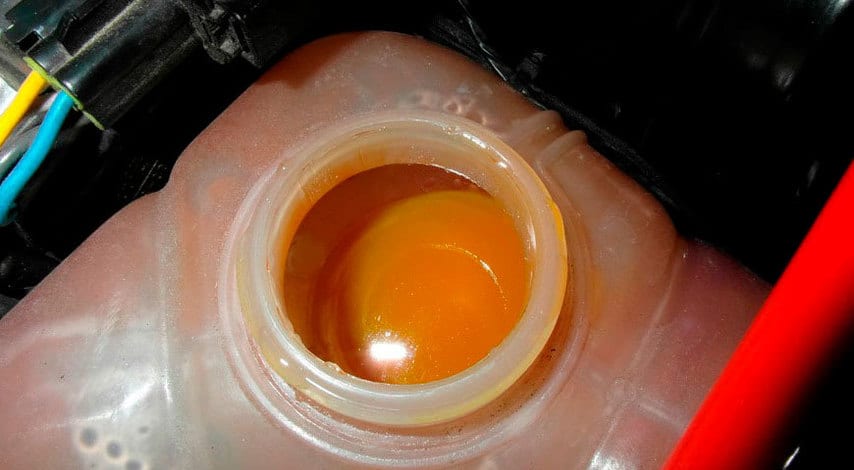
Each machine has its own regulation, indicating the type of coolant and the replacement period. Adhering to the factory recommendations, filling in the necessary antifreeze, you will be able to extend the life of the parts of the cooling system, as well as ensure fuel efficiency. In addition to the regulation, there are extraordinary cases when it is imperative to change the coolant.
Engine overheating
In the case when there is confidence in the operability of the water pump, thermostat, radiator and expansion tank cap with a steam-air valve, but the engine is overheating, the reason lies in the coolant. The reasons that the coolant does not cope with cooling are several:
- antifreeze life has expired; it does not provide lubricating and heat-conducting properties;
- quality of antifreeze or antifreeze;
- the wrong proportion of distilled water with antifreeze concentrate (more water);
- insufficient coolant in the system.
Any of the above reasons leads to overheating, which means that the power and efficiency of the engine is reduced, and the risk of failure of the power unit increases several times with each degree gained.
Engine does not heat up to operating temperature
The reason lies in the wrong proportion of water to antifreeze. Often, car owners mistakenly pour pure concentrate into a system that retains its properties and does not freeze at -80 °. In this case, the engine will not be able to warm up to operating temperature, in addition there is a risk of damaging the surfaces of the parts of the cooling system.
On each package with concentrate there is a table of proportions, for example: the concentrate does not freeze at -80 °, with a ratio of 1: 1 with distilled water, this threshold decreases from -40 °. It is important to take into account the region of operation of the car, if in winter the temperature rarely drops below -30 °, then for your own comfort you can mix liquids 1: 1. Also, to prevent such errors, ready-made “chills” are sold.
If you accidentally poured a pure concentrate, then you need to pour half into the tank for the next replacement, and add the same amount of water. For accuracy, use a hydrometer that displays the freezing point of the coolant.
Corrosion
An unpleasant process that destroys not only the details of the cooling system, but also the engine itself. Two factors play in the formation of corrosion:
- only water is in the system, and not distilled;
- lack of anticorrosive additives in the “coolant”.
Quite often, a similar process is observed when disassembling the engines of Soviet cars, which drove most of their way on the water. First, scale deposits form, the next stage is corrosion, and in advanced cases, it “eats through” the wall between the cooling jacket and the oil channel, as well as cylinder liners.
If corrosion occurs, you will have to rinse the system with special compounds that will help stop the destructive process, after which you need to fill in a high-quality certified antifreeze.
Sediment
The occurrence of sediment can be for several reasons:
- the life of the coolant has been exceeded;
- mixing the concentrate with unprepared water;
- punctured cylinder head gasket, due to which oil and gases enter the cooling system.
If a cause is identified, an urgent fluid change with flushing is required.
How often is a replacement needed?
Despite the regulations dictated by the vehicle manufacturer, it is better to change the fluid more often, about 25% earlier than the expiration date. This is explained by the fact that during this time the pump changes at least once, the liquid drains, after it is again poured into the system. During this time, antifreeze manages to oxidize somewhat, losing its properties. Also, the driving style, the region of operation, as well as the location (urban or suburban) affect the replacement interval. If the car is operated more in the city, then the coolant needs to be changed more often.
How to drain the coolant
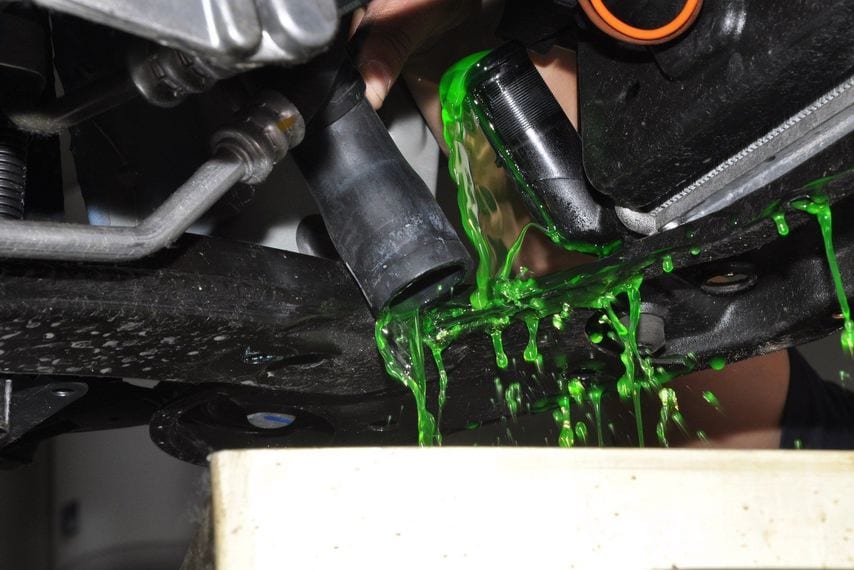
Depending on the design of the engine, there are several options:
- drain using a tap on the radiator;
- through a crane located in the cylinder block;
- when dismantling the lower radiator pipe.
Drain sequence:
- warm the engine to a temperature of 40 degrees;
- open the cap of the expansion tank;
- the car must be on a flat surface !;
- substitute the capacity of the required volume under the spent liquid, it is strictly forbidden to drain the coolant to the ground;
- depending on the engine modification, we begin the process of draining the old “slurry”;
- gravity drains the liquid in an amount of 60-80%, to ensure complete drainage, close the expansion tank cap, start the engine and turn on the stove at full power, due to which the remainder of the liquid will splash out under pressure.
Flushing the engine cooling system
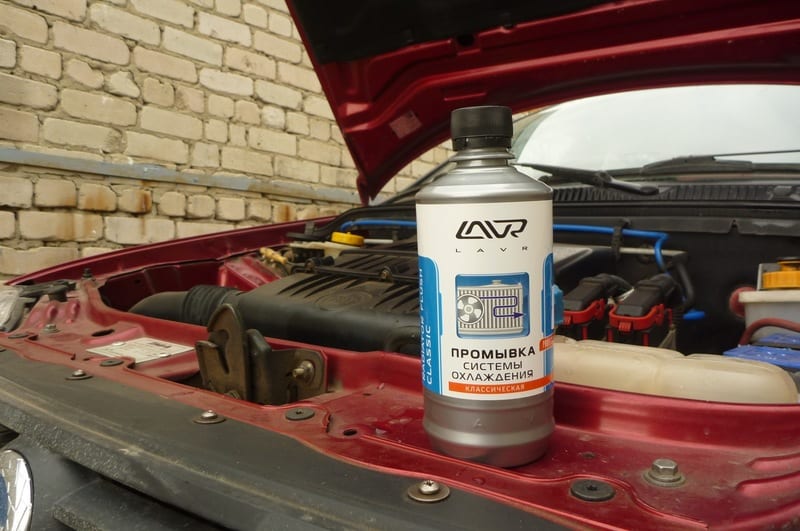
Rinse the cooling system in several cases:
- switching to another type of antifreeze or another manufacturer;
- the engine was running on water;
- the life of the coolant has been exceeded;
- Sealant was added to the system to eliminate radiator leaks.
As a flushing, it is recommended to forget about the “old-fashioned” methods and use special formulations containing detergents and cleaning agents. For example, there are sets of soft 5-7 minute washing, the effectiveness of which is controversial, or a set of two-stage cleaning. At the first stage, it is necessary to drain the old liquid, fill the bottle of the cleaner for primary washing, add clean water to the minimum mark. The engine should run for about half an hour at a temperature of 90 degrees. On this, this system is cleaned of scale and rust.
The second stage involves the removal of oil deposits and decomposition products of the coolant. It is necessary to drain the water from the primary flush and also make a new composition. The engine idles for 30 minutes, after the spent liquid is drained, pour clean water into the system and let it run for another 15 minutes.
The effect is the cleanest cooling system, the absence of corrosion, the support of the resource embedded in the new antifreeze.
Coolant Replacement: Step-by-Step Guide
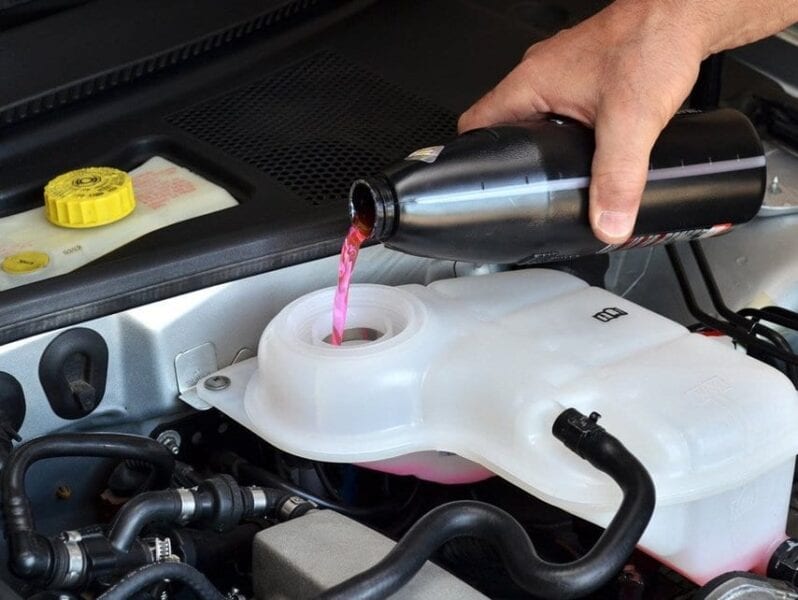
To replace the coolant we need:
- minimum set of tools;
- container for waste liquid;
- new fluid in the required volume;
- flushing kit if necessary;
- 5 liters of distilled water for washing;
- hydrometer;
The replacement procedure is as follows:
- follow the instructions on how to drain the old fluid;
- if necessary, flush the system as described above;
- draining the old liquid, the reliability of the connections of the cooling pipes and the tightness of the tap are checked;
- if you have purchased concentrate and distilled water, then the necessary proportion is mixed, which you check with a hydrometer. Upon reaching the desired mark on the freezing border, we proceed further;
- open the cap of the expansion tank and fill the fluid to the maximum mark;
- close the lid, start the engine, turn on the stove to the maximum, let it run at idle and medium speed, but not allowing the temperature to rise more than 60 °;
- open the lid and top up to the maximum mark, repeat the procedure, and when the liquid stops leaving the tank, the system is full.
When replacing the coolant, the system is aired, to remove air, you must press the upper cooling pipe with the tank or radiator cap open. You will see how air bubbles come out of the “cooler”, and dense nozzles that are difficult to squeeze indicate the absence of air.
Optimal proportions
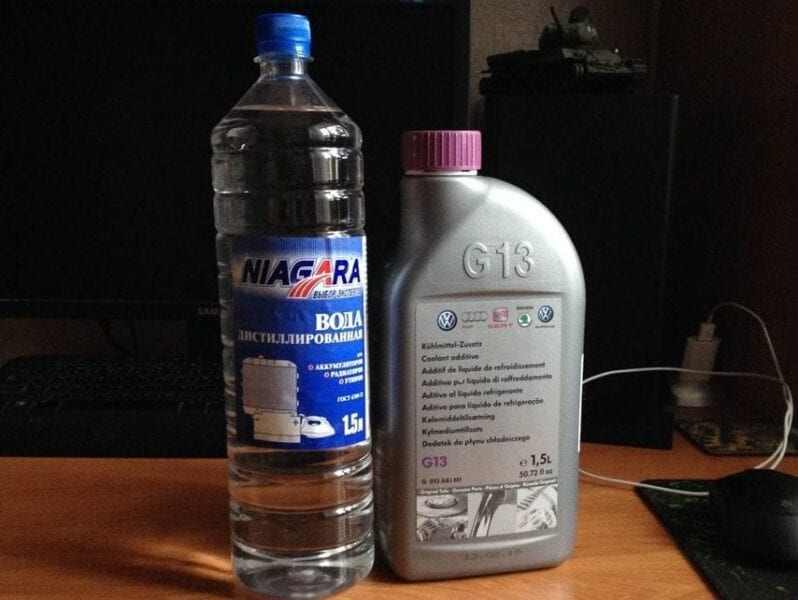
The manufacturer of coolants, namely concentrates, indicates coolant characteristics in proportion to water. How much water does antifreeze need? So much so that the freezing temperature is with a margin of 10 degrees than is possible in your area.
Questions and answers:
Do I need to flush the cooling system when changing the coolant? Professionals recommend flushing the system, because the remnants of the used antifreeze can react with the new coolant and reduce its effectiveness.
How to properly replace antifreeze in a car? The old fluid is drained from the radiator and the cylinder block (if provided for by its design) and a new one is poured. At first, the volume needs to be replenished.
What is used as a coolant? Antifreeze or antifreeze (each of them has several colors). If a breakdown occurs, then for a while you can fill in distilled water.
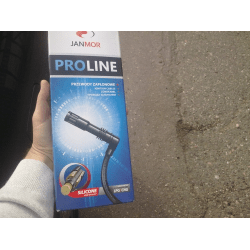
One comment
Vika
Is this a problem when at 5000 thousand the antifreeze in the tank has decreased to a minimum?